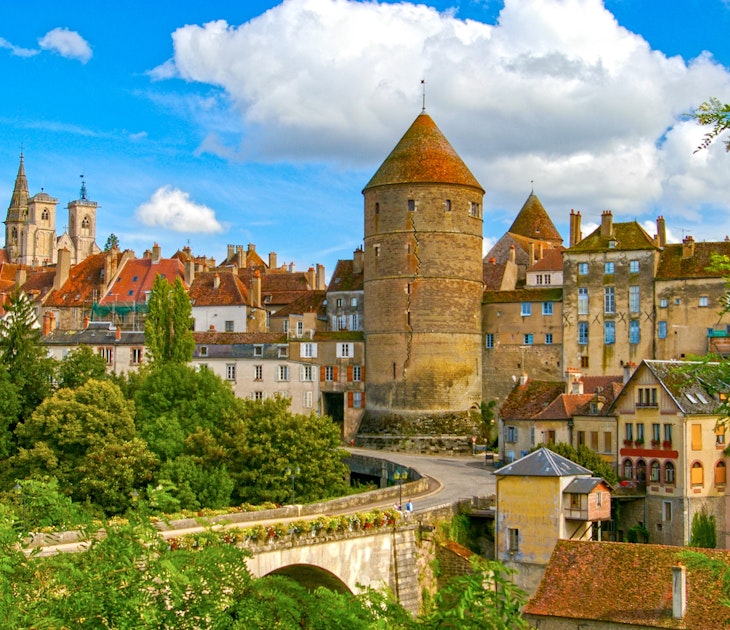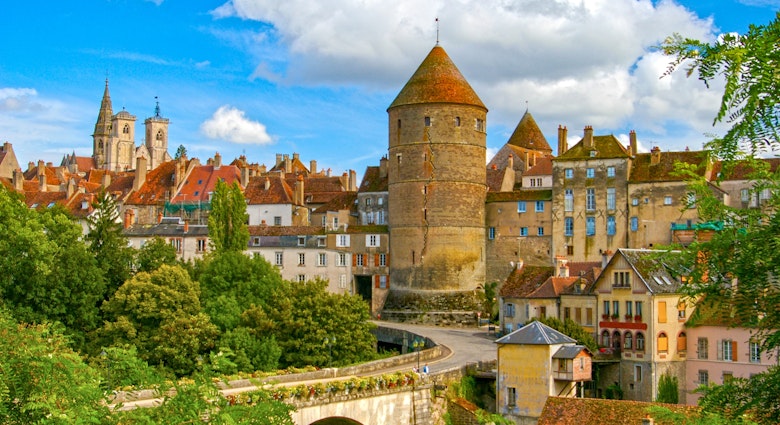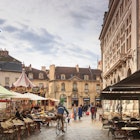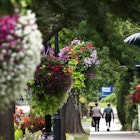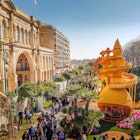Peeling back the layers of Burgundy’s history through the ages reveals the beauty and elegance of the region today.
Art and architecture remain from before Celtic and Gallo-Roman antiquity to the time of the powerful Benedictines, the austere Cisterceans, and the Dukes of Burgundy, who bequeathed artistic and architectural riches to Burgundy’s capital, Dijon, and beyond during their glittering Golden Age.
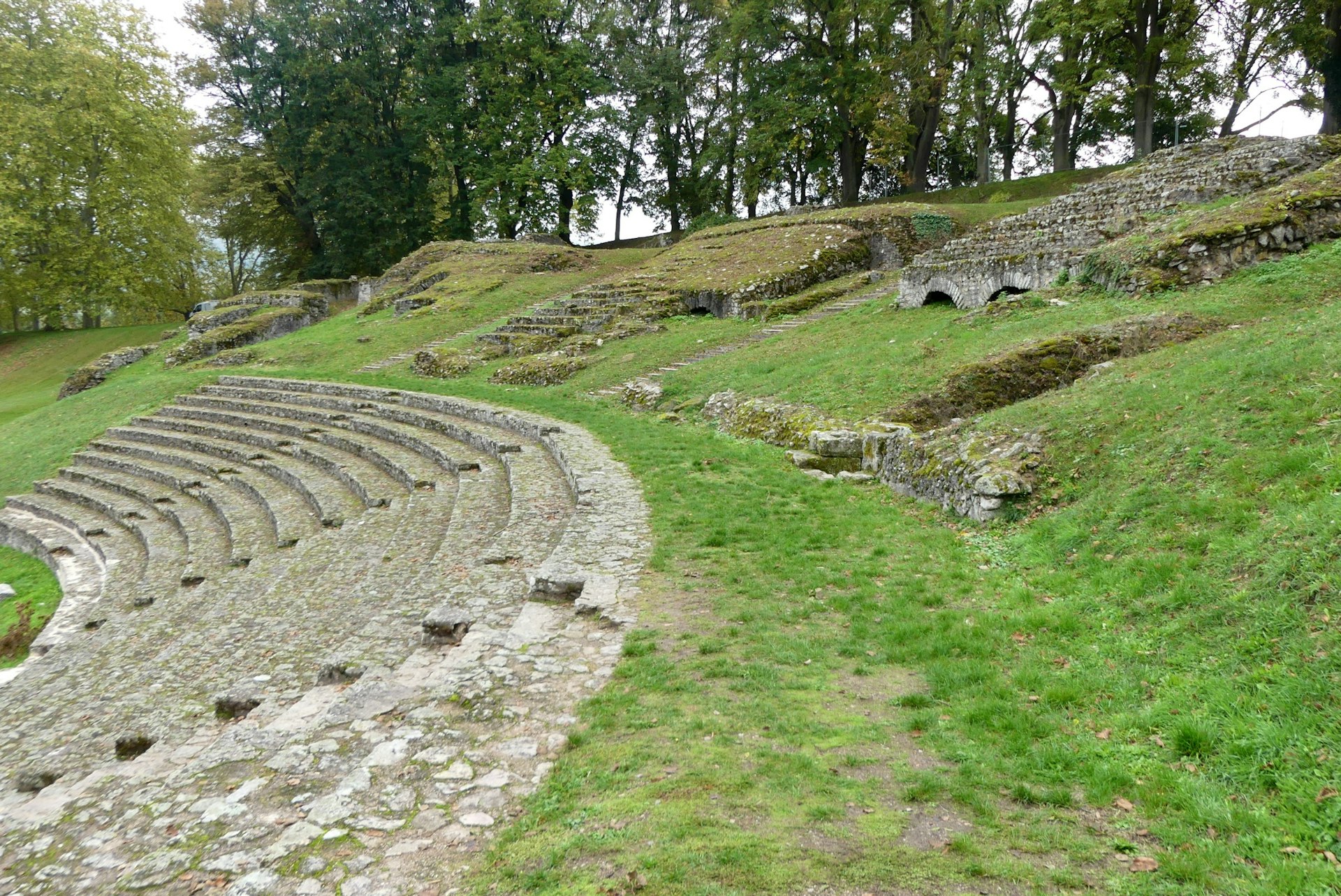
Early beginnings
Burgundy’s artistic heritage dates to Paleolithic period cave paintings, which you can explore at the Grottes d’Arcy-sur-Cure, north of the Unesco world heritage site of Vézelay.
Jumping forward in time to the metalwork of the Celts – stunning artifacts at Dijon’s Musée Archéologique include a 1st-century AD bronze of the Celtic Gallo-Roman river goddess Sequana, who gave her name to the Seine. Offerings for her were found at the river’s source, 19 miles (30km) northwest of Dijon.
At mountaintop stronghold Bibracte (today home to the Museum of Celtic Civilisation), Vercingétorix became chief of the Gaulish coalition, only to be vanquished shortly afterwards by Julius Caesar at Alésia. The Romans went on to build structures still in evidence today, such as the town gates and Théâtre Romain at Augustodunum (now Autun), and plant the first vineyards.
After the Roman Empire fell in the 5th century, Christianity’s boundaries expanded across Europe, ushering in abbeys and monasteries.
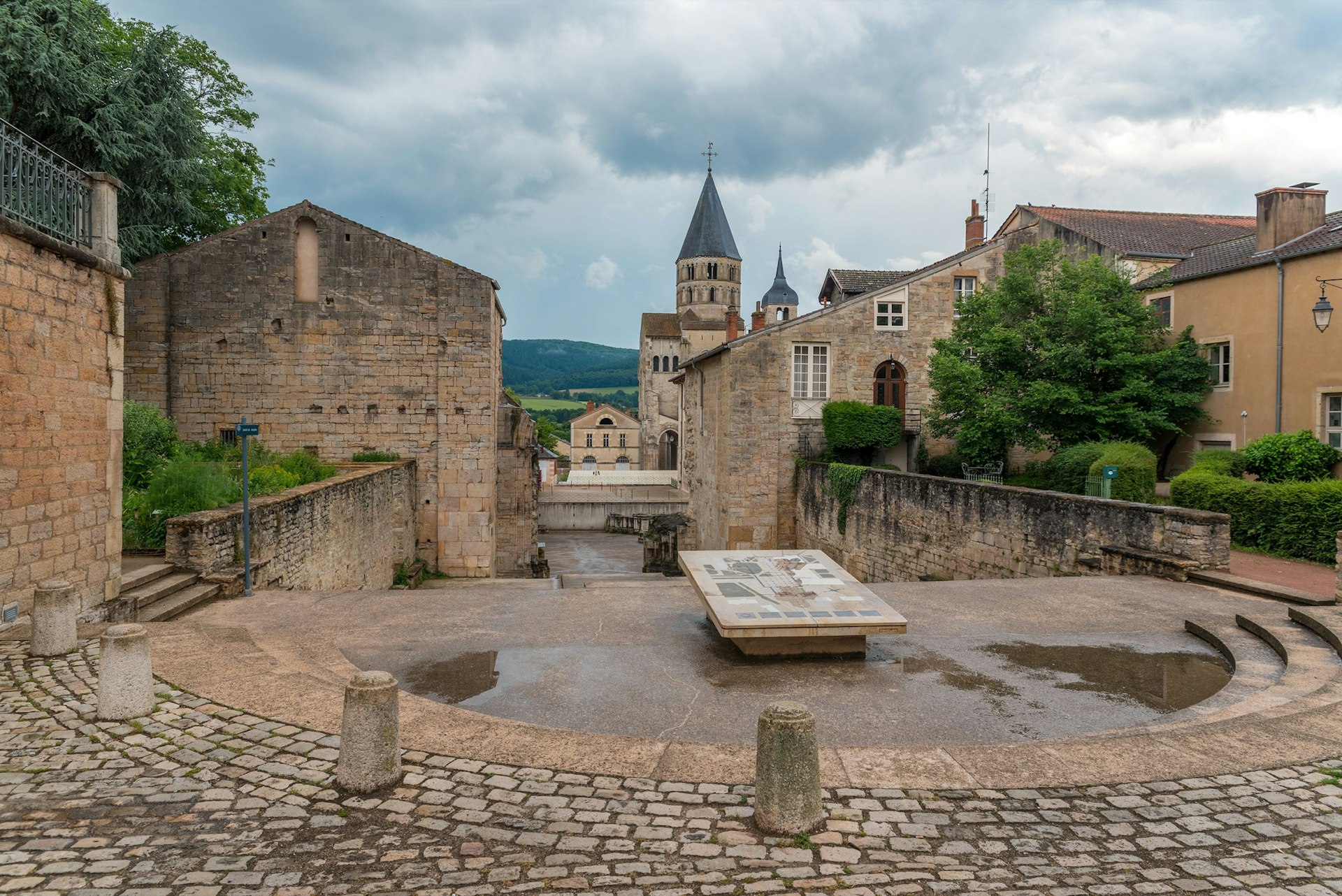
Monastic legacies from the Middle Ages
Burgundy was hugely influential during the Middle Ages thanks to two monastic orders. The ambitious Benedictines’ base was Burgundy’s first monastery in Cluny, which the order founded in 910. Until the construction of St Peter’s Basilica in the Vatican, it was Christendom's largest church and controlled hundreds of others across Europe. A breakaway group, the Cistercians, sought a more ascetic life of prayer and work, and set up a base at Cîteaux in 1098.
Industrious monks tended the vines to make wine for mass, building the stone walls of clos (enclosed vineyards), such as Clos de Vougeot, to protect the vines from animals, and marking out grape-growing plots that remain fundamental to the terroir (environmental factors that impart unique qualities).
Bonding over Burgundy: Cycling the Route des Grands Crus
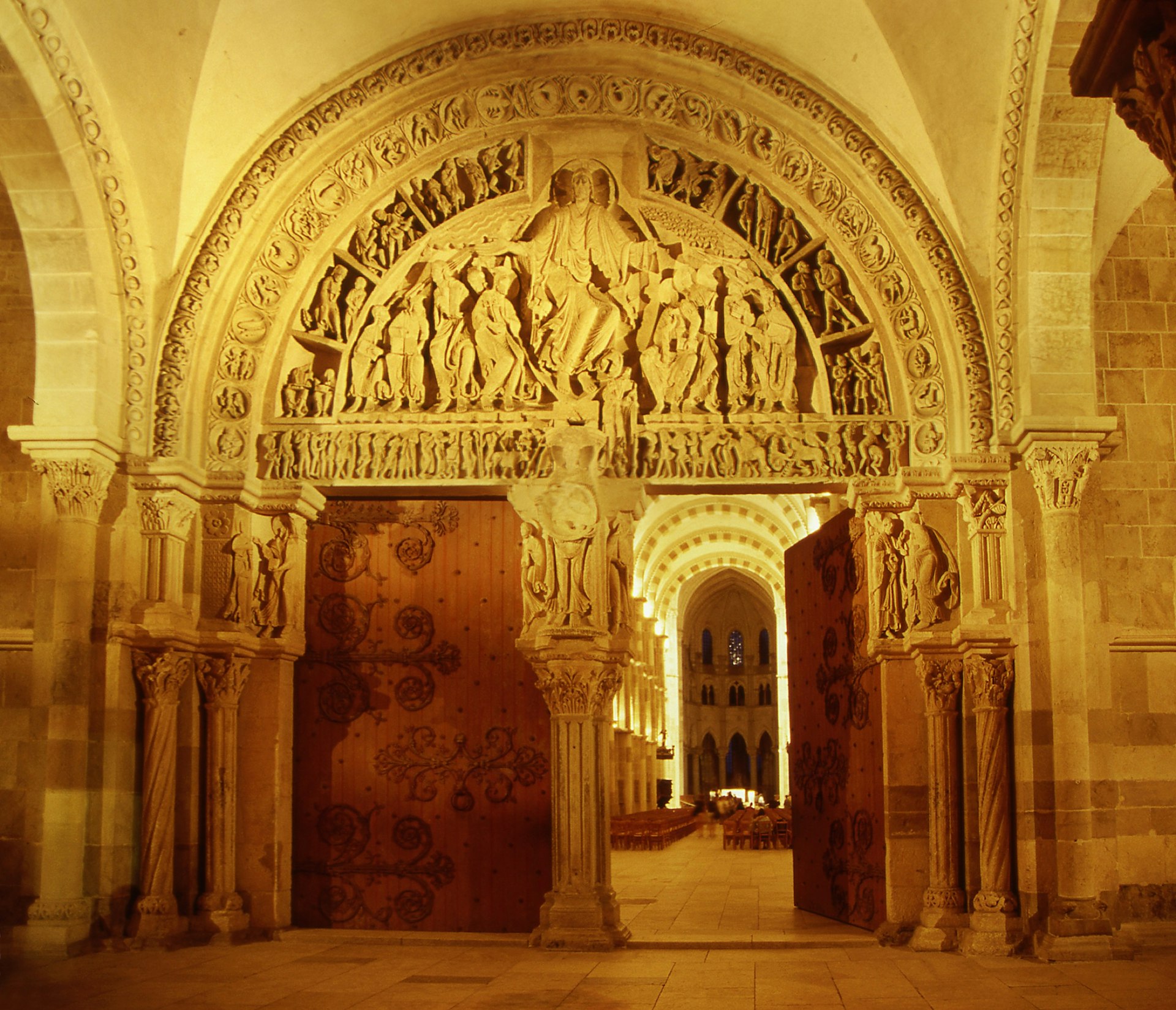
Romanesque treasures
As the monasteries’ dominance grew, dozens of cathedrals, hundreds of large churches and countless smaller ones burgeoned across Burgundy, and pilgrimages attracted the faithful.
Gallo-Roman buildings still standing at the time inspired Romanesque architectural elements such as round arches and finely carved capitals, such as those at Cluny, Cathédrale St-Lazare at Autun (the work of Burgundy master sculptor Gislebertus), and Basilique Ste-Madeleine at Vézelay (from where the First Crusade departed in 1095 for the Holy Land).
The priory church of La Charité-sur-Loire, Église Notre-Dame de La Charité-sur-Loire, is a treasure of Romanesque art from the 11th and 12th centuries. Highlights of the Unesco site include the capitals of the choir and two tympanums.
Bonding over Burgundy: Delicious dining experiences
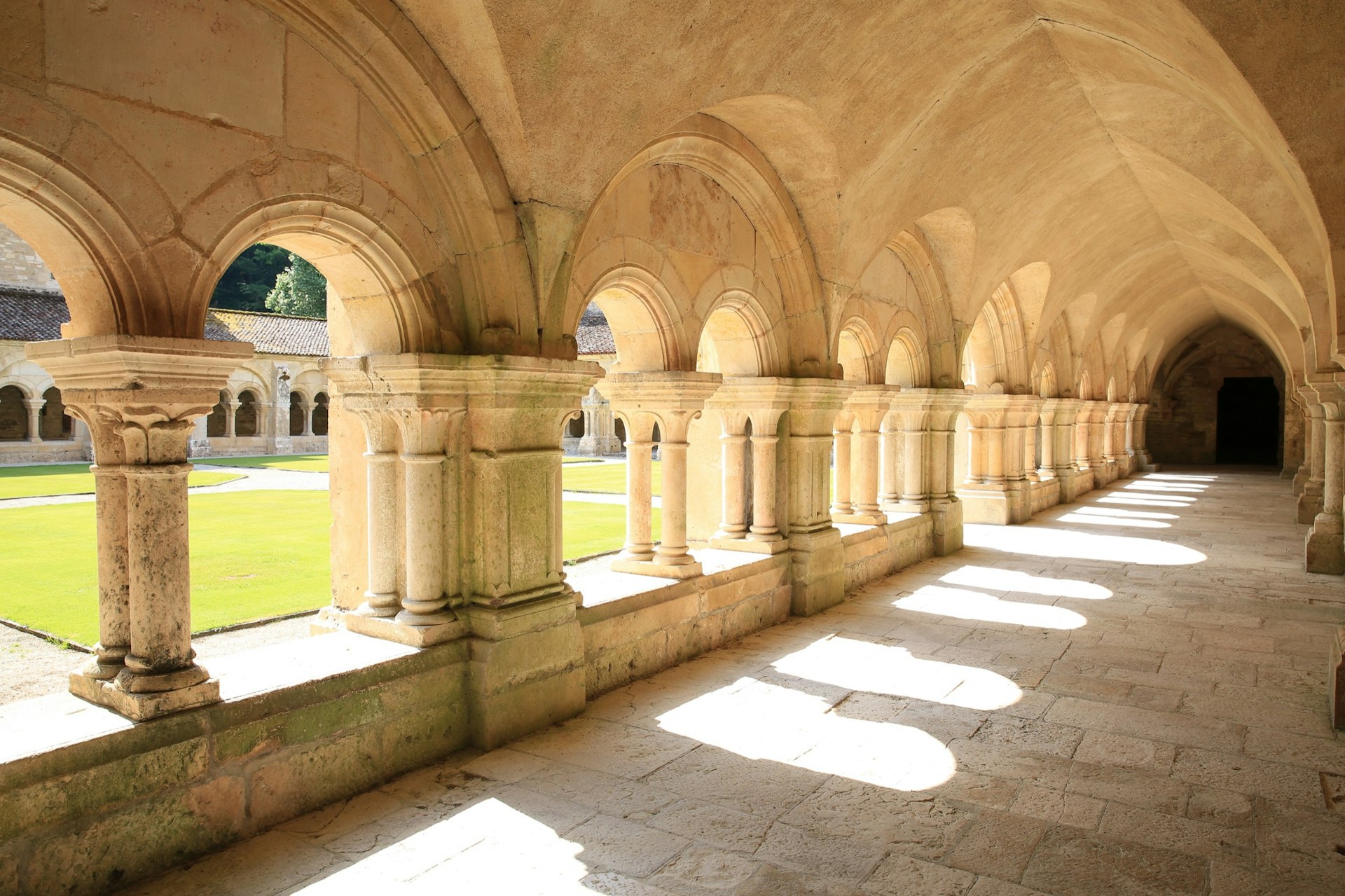
Gothic wonders
Cistercian monasteries retained a pure, unadorned aesthetic, such as the Unesco site of Abbaye de Fontenay and the Abbaye de Pontigny in Chablis. Meanwhile, building materials, along with some of Italy’s finest craftspeople, such as fresco painters and stained-glass-makers, arrived via Burgundy’s rivers, and austere Romanesque architecture evolved into the much more elaborate Gothic style.
The first of the Gothic cathedrals, Cathédrale St-Étienne de Sens, was built from around 1135 in Sens, just 78 miles (125km) southeast of Paris. It served as the inspiration for England’s Canterbury Cathedral, among others; the adjacent Palais Synodal houses a museum, with tapestries and robes (including Thomas à Becket’s) and a private art collection with pieces by Peter Brueghel and Rodin.
In Nevers (famed for its production of tin-glazed earthenware pottery known as faience from around 1580 to the early 19th century), Cathédrale St-Cyr et Ste-Julitte de Nevers combines two buildings: the western apse and transept are the remains of a Romanesque church, while the nave and eastern apse are Gothic.
Other superb Gothic churches in Burgundy include Cathédrale St-Étienne and Abbaye St-Germain, with its flying buttresses in Auxerre; Collegiale Notre-Dame de Semur-en-Auxois in Semur-en-Auxois; and Église Notre Dame in Dijon.
Bonding over Burgundy: Exploring medieval history

The Dukes of Burgundy
The monasteries’ power and influence set the stage for the golden age of the Dukes of Burgundy (or Ducs de Bourgogne in French) in the 14th and 15th centuries until the eve French Renaissance.
Evolved from the earlier Kingdom of the Burgundians (from territories ruled by the Germanic Burgundian tribe that arrived in 5th-century Gaul), the Duchy of Burgundy was founded in the 9th century by the Carolingian kings of France. From 1364, four generations of dukes – Philip the Bold, John the Fearless, Philip the Good and Charles the Bold – presided over its glory days.
In reward for his bravery at the Battle of Poitiers, Philip the Bold received the Duchy of Burgundy from his father King John II of France. Philip married Margaret III of Flanders, setting up court in Dijon. Flemish artisans built the Gothic ducal palace, the Palais des Ducs et des États de Bourgogne, now home to the Musée des Beaux-Arts. Riches at the celebrated museum include the tombs of Philip the Bold and his son, John the Fearless, by Dutch sculpture Claus Sluter.
Bonding over Burgundy: Nourishing outdoor adventures
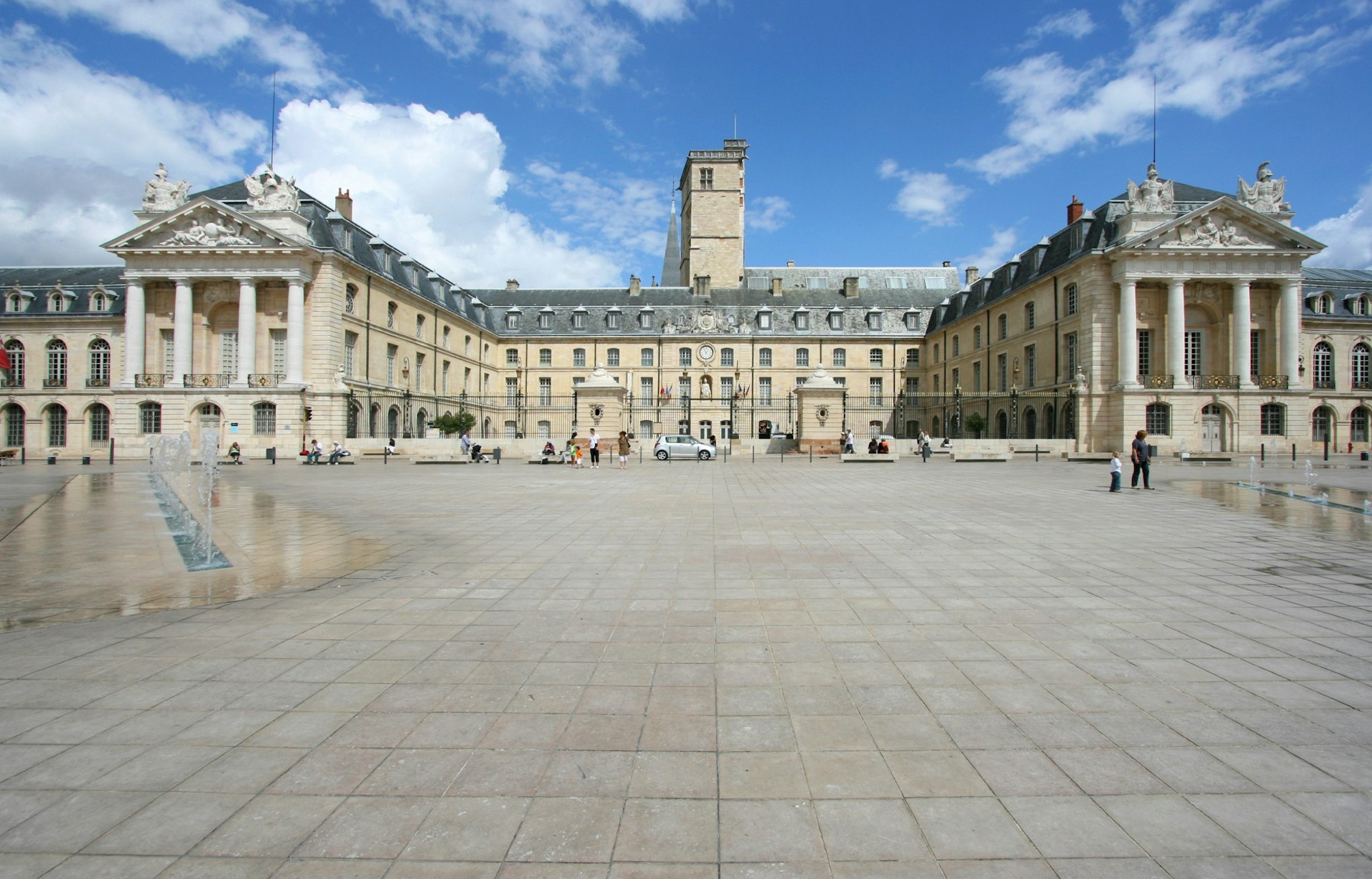
The Dukes of Burgundy’s best-preserved residence is the Château de Germolles, a fortified barn-turned-castle built between 1385 and 1400 in Mellecey, south of Beaune. In the late 14th century, Philip the Bold’s wife engaged Claus Sluter and Jean de Beaumetz, among others, to transform it into a palatial retreat (you can visit its ducal suite, chapels, châtelet and kitchen).
At its zenith, the duchy’s territory extended across present-day eastern France, Luxembourg, Belgium and the Netherlands. This talent pool resulted in artistic and architectural advances such as the exquisite detailing of Burgundy’s distinctive geometric glazed ceramic roof tiles. A stunning example is the Gothic Hôtel-Dieu des Hospices de Beaune. Established by Philip the Good’s chancellor, Nicolas Rolin, it houses Rogier van der Weyden's magnificent multi-panel altarpiece Polyptych of the Last Judgement.
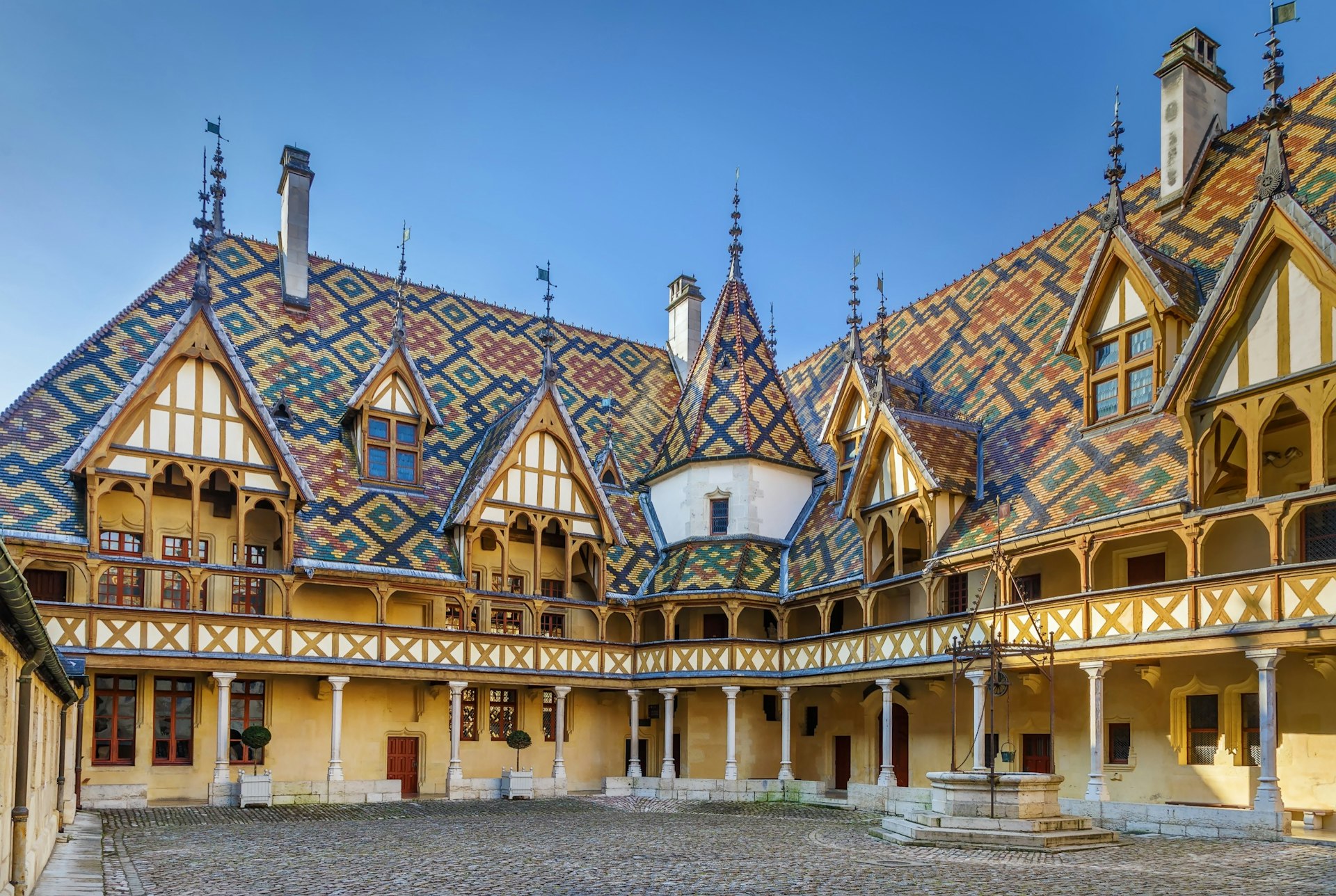
End of an era
It was Philip the Good’s troops who sold Joan of Arc to the English in 1430; his subsequent break with the English and agreement for Charles VII’s installment on the throne saw the Duchy of Burgundy established as an independent principality, with Dijon the capital.
The principality, however, proved short lived. Philip the Good’s son Charles the Bold’s lavish lifestyle drained duchy’s coffers. His daughter Marie married Maximilian, heir to the Habsburg empire, and on Charles the Bold’s death in 1477, part of the Duchy of Burgundy passed to the Habsburgs, while King Louis XI annexed the remainder for France. But its history lives on in Burgundy’s artistic and architectural splendor.

